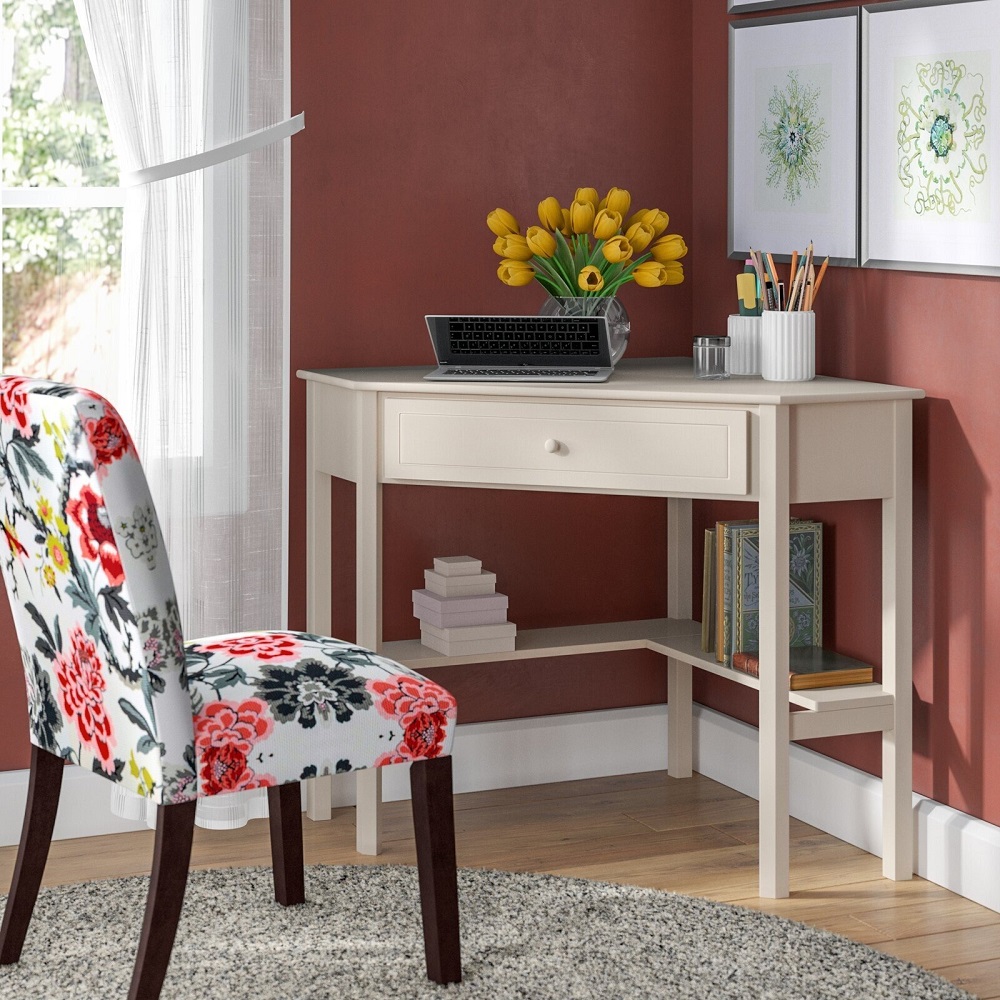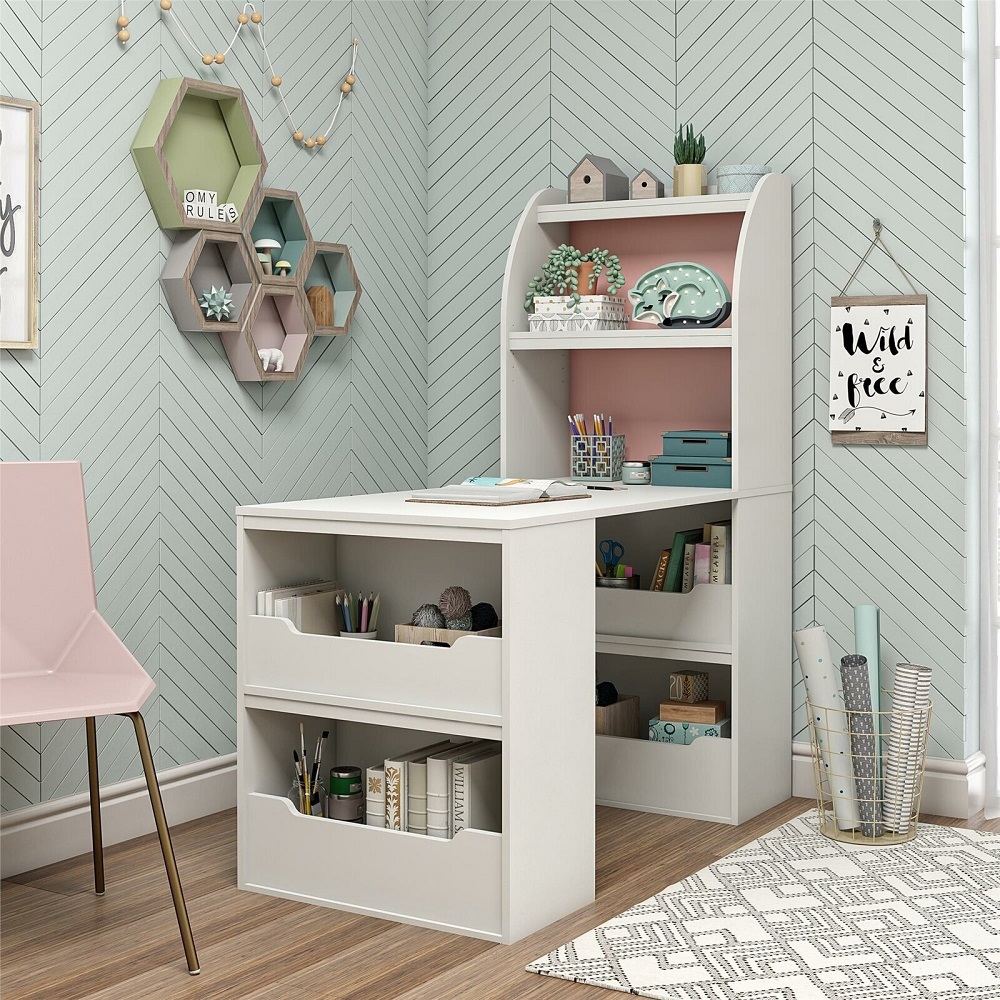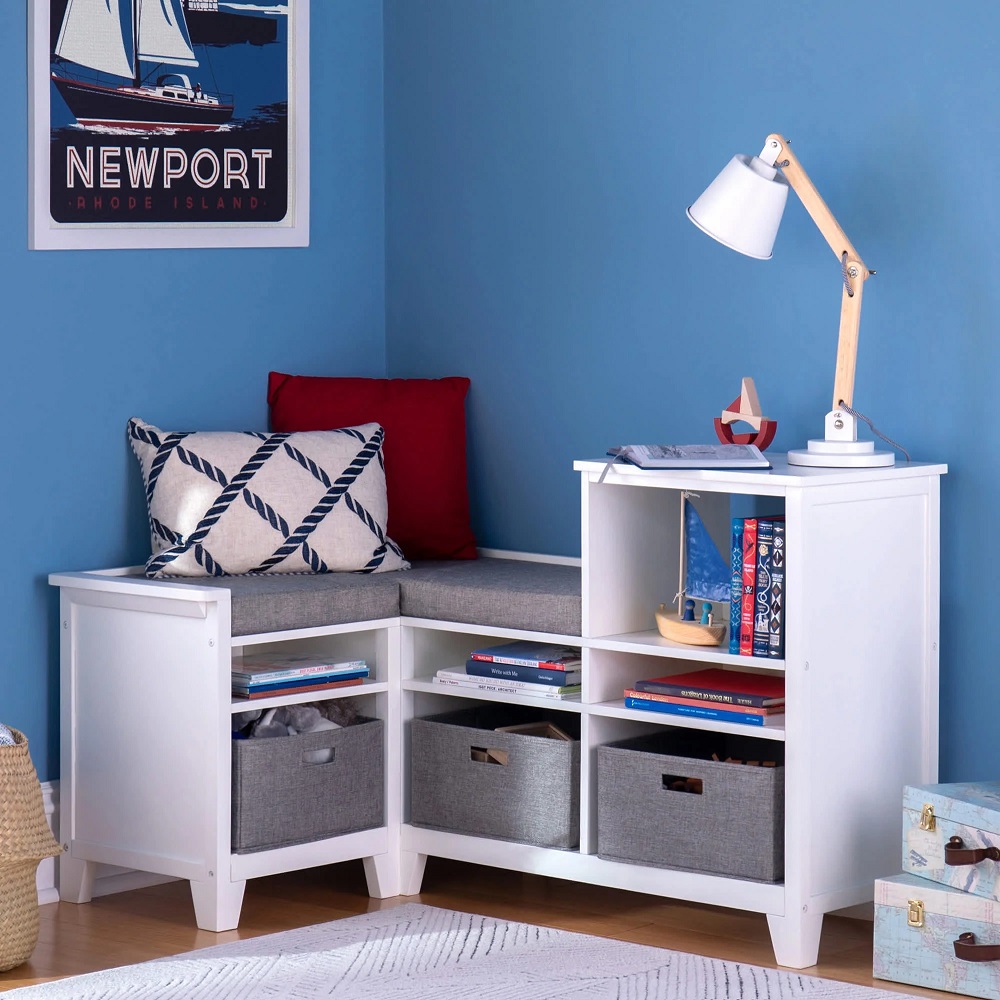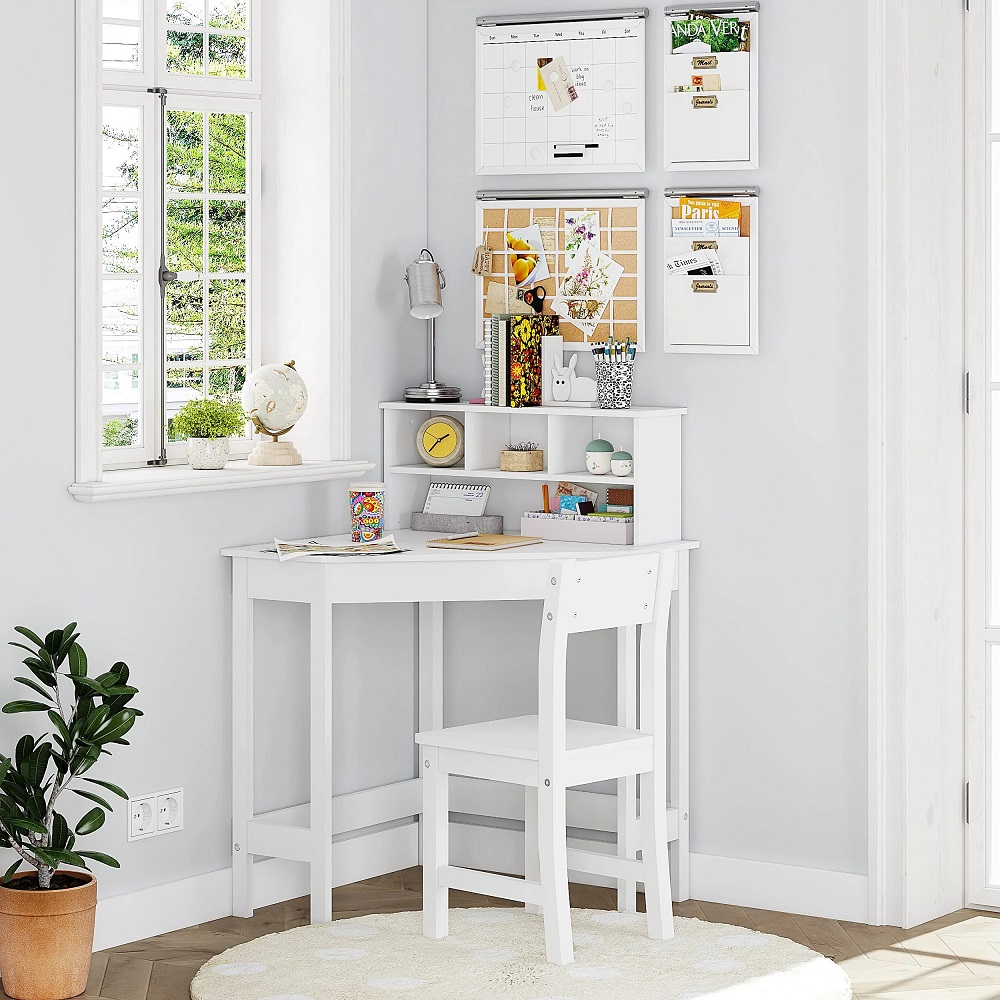Introduction to Space-Saving Desk Concepts for Kids
As parents and designers look towards the future of children’s furniture, the need for space-saving solutions is clearer than ever. With rising urban density and smaller living areas, it’s important to maximize the utility of every square foot. A kids corner desk is a prime example of a furniture piece that addresses these space challenges while catering to the needs of children.
In this guide, we’ll introduce the concept of space-saving desks designed specifically for kids. These desks are not just ordinary pieces of furniture; they are thoughtfully crafted to fit snugly into corners, making the most of often underused spaces. This approach provides a dedicated area for study and play without compromising the rest of the room’s functionality.
Space-efficient desk designs for kids include features that go beyond compact size. They incorporate creative storage options, adjustable components, and sometimes, modular capabilities that allow the desk to grow with the child. The aim is to create a versatile, clutter-free environment in which kids can focus and learn.
Moreover, a kids corner desk often reflects the latest trends in design and ergonomics, ensuring that these essential pieces of furniture are both stylish and conducive to healthy postures. Expect to encounter a range of materials, from classic woods to innovative, eco-friendly composites, all chosen to provide durability, safety, and aesthetic appeal.
Throughout this blog, we will explore the evolution of kids’ desk design, showcase top corner desk models of 2025, delve into the materials and ergonomic features that set them apart, and provide insightful tips for selecting the perfect kids corner desk for your child’s room.

The Evolution of Kids’ Desk Design
The design of kids’ desks has dramatically changed over the years. Initially, desks for children were often smaller replicas of adult furniture. Simple, often bulky, and made without much thought to the unique needs of young users. But over time, designers realized that children’s furniture had to evolve. It needed to respond to the changing lifestyles and the growing understanding of child development.
The late 20th century saw a shift towards ergonomics and adjustability. Desks became more than static pieces of furniture. They started to feature adjustable heights and tiltable tabletops, allowing them to adapt to a child’s growth spurts and different activities.
Come the 21st century, the focus intensified on space-saving measures. The rise of urban living and smaller home spaces demanded more ingenious solutions. This is where the concept of the kids corner desk really took off. By fitting into underutilized corners of a room, they offered a solution to space constraints while still providing adequate work area.
As we moved closer to 2025, environmental concerns started to steer design choices. Eco-friendly materials became popular, and sustainability turned into a key consideration. Today’s kids corner desks reflect this change, merging environmental care with smart design.
Current designs are also shaped by the tech-driven life children lead. Desks now often have built-in charging stations and compartments for electronic devices. The aesthetics have also evolved, with a wide array of colors and themes available, mirroring the diverse interests of children.
Thus, the evolution of kids’ desk design mirrors changes in societal needs, educational understanding, and technological advancements. Designers have risen to the challenge, creating multifunctional, adaptable, and engaging pieces of furniture that fit into the narrative of modern childhood.
Top Space-Efficient Corner Desk Designs of 2025
As we advance into 2025, we see groundbreaking trends in the design of kids corner desks. Let’s dive into some of the top designs that combine space efficiency with modern aesthetics and practicality.
The Modular Transformer Desk
Innovative by design, the Modular Transformer Desk is a hit. It starts as a small corner unit and expands, offering more space as your child grows. Its detachable modules can be reconfigured, making it a long-term investment for space-conscious families.
The Floating Corner Workstation
Next up is the Floating Corner Workstation. It’s mounted onto the wall, freeing up floor space. Its sleek, floating design minimizes clutter, and adjustable shelving keeps books and supplies within easy reach, without overwhelming the desk surface.
The Collapsible Study Nook
The Collapsible Study Nook is a marvel for tiny spaces. It can fold away when not in use, transforming back into a discreet cabinet. With a flip-down desk surface and hidden compartments, it’s perfect for quick study sessions.
The All-in-One Tech Hub
For tech-savvy kids, the All-in-One Tech Hub is equipped with built-in USB ports and cable management systems. It effectively combines a traditional corner desk with modern technology needs, keeping devices charged and ready without taking up extra space.
These cutting-edge designs reflect the key trends of 2025: modularity, minimalism, and technological integration. Each kids corner desk model is a testament to how design can evolve to address the ever-changing needs of growing children while optimizing living spaces. The inclusion of kids corner desk as a keyword ensures that parents searching for these innovative furniture solutions will find the guidance they need to make the best choice.

Innovative Materials Used in Modern Kids’ Desks
In 2025, kids corner desks are not just smart in design, but also in the materials used. These innovative materials are chosen for durability, safety, and environmental friendliness.
Eco-Friendly Composites
Many modern kids’ desks are now made from eco-friendly composites. These materials blend natural fibers with recycled plastics, resulting in sturdy and sustainable desks. Parents love that these desks are kind to the planet while kids enjoy the colorful options available.
Reinforced Cardboard
Believe it or not, reinforced cardboard has entered the scene as a strong, lightweight, and recyclable option. It’s perfect for temporary solutions or spaces that change frequently. It’s also cost-effective, offering an economical choice for families.
Bamboo and Sustainable Woods
Bamboo is known for its rapid growth, making it a renewable resource. Both materials bring a warm, natural look while being highly durable.
Non-Toxic Plastics
Safety is paramount, so non-toxic plastics are regularly used in kids’ furniture. These plastics do not release harmful chemicals, ensuring a safe environment for children to study and play in.
Smart Surfaces
Lastly, kids corner desks often feature smart surfaces that resist scratches and stains. They make cleaning a breeze and keep the desk looking new for longer.
With these materials, designers are creating kids corner desks that are strong, safe, and sustainable. They’re also ensuring these pieces fit beautifully into any room, with the added benefit of being kind to our environment.
Ergonomic Features for Enhancing Comfort and Posture
As 2025 unfolds, ergonomic features in kids corner desks have become paramount. Comfort and correct posture are critical for children’s development and health. Let’s explore the ergonomic advances that top the list.
Adjustable Height Mechanisms
One standout feature is the adjustable height mechanism. This allows the desk to match the child’s growth. Kids can sit comfortably at their desks from preschool to high school.
Tilted Desk Surfaces
Tilted desk surfaces reduce neck and eye strain. They help maintain a natural angle for reading and writing, which is better for posture.
Contoured Edges and Soft-Corner Design
Desks now have contoured edges and soft-corner designs. These reduce the risk of injury and make it safer for kids during active play.
Ergonomic Chairs and Footrests
Chairs and footrests designed to promote good posture are also important. They support the child’s back and legs, making long study sessions more comfortable.
Integrated Wrist Rests
Some kids corner desks come with integrated wrist rests. These support the arms during typing or drawing, preventing strain.
These ergonomic features are essential for a kid’s comfort and safety. By choosing desks with these options, parents can help ensure their children’s well-being during study time.

Creative Storage Solutions for Corner Desks
When scouting for the best kids corner desk, storage is key. Designers in 2025 have crafted desks with innovative storage solutions that keep clutter at bay, and make organization fun for kids. These desks help in instilling good habits by providing ample space for all of a child’s school essentials. Here are some creative storage solutions that stand out in today’s market.
Under-Desk Shelving
Shelving tucked neatly under the desk surface maximizes space. These shelves often slide out for easy access, and tuck away when not in use. It’s perfect for keeping textbooks and workbooks out of the way but within reach.
Hidden Compartments
Desks with hidden compartments offer a secret space for kids. These can be in the form of drawers or bins that appear as part of the desk’s design. It’s a clever way to hide away mess and organize supplies.
Overhead Hutches
Overhead hutches use vertical space wisely. They can store items that are not used often, like art supplies or seasonal projects. This keeps the desk space open and focused for study.
Pull-Out Writing Boards
Some corner desks have pull-out writing boards. These add more working space when needed and slide back in seamlessly. They double as extra storage for notepads or devices.
Corkboard and Whiteboard Panels
Many desks come with corkboard or whiteboard panels built into their sides. This is great for pinning important notes or drawing quick ideas, saving space on the desk surface.
These storage features help maintain a tidy workspace that encourages kids to focus. Moreover, being able to manage their own space can empower children to be more independent. When selecting a kids corner desk, weigh these inventive storage options against your child’s needs to find the best match.
Integrating Technology into Kids’ Study Spaces
As we navigate through 2025, integrating technology into kids’ study spaces has become essential. Tech influences the design of kids corner desks, catering to the digital needs of young learners. Here’s how the latest desks are tech-forward yet child-friendly.
Built-In Charging Stations
Modern kids corner desks now come with built-in charging stations. These allow easy access to power for devices. This means kids can charge tablets and smartphones right at their desks.
Cable Management Systems
Desks have cable management systems to keep wires neat. This feature helps reduce clutter from cords. It ensures safety by keeping cables out of children’s way.
Touch-Sensitive Controls
Some corner desks feature touch-sensitive controls. These offer adjustable lighting or desk heights with just a tap. This tech makes it easy for kids to customize their study environment.
Tech Compartments and Docking Areas
Special compartments hold laptops or tablets when not in use. Docking areas keep devices secure and handy during homework time. They also protect gadgets from spills or accidents.
Smart Device Syncing
Desks can sync with smart home devices. This lets kids set reminders or search the web hands-free. It’s a simple way to support multitasking and learning.
Technology is blended into furniture, offering a modern twist on the kids corner desk. It provides practicality for today’s digital world, while still fitting into small spaces. When selecting a desk, consider tech features that match your child’s needs.
Choosing the Right Corner Desk for Your Child’s Room
When it comes to picking the perfect kids corner desk, it’s not just about saving space. It’s about finding a desk that will support your child’s needs both now and in the future. Here’s what to consider:
Assess Your Space
Start by measuring the corner space available in your child’s room. Use these measurements to narrow down desk sizes that will fit.
Consider Growth
Pick a desk with adjustable features so it can grow with your child. Look for height adjustment and modular options.
Think About Storage Needs
How much storage will your child need? Choose a desk with built-in shelves or compartments to keep things organized.
Check for Ergonomic Features
Make sure the desk has ergonomic touches like a tilted surface or adjustable chair to support proper posture.
Factor in Tech Specifications
If your child uses gadgets, opt for a desk with charging stations and cable management. It will keep their workspace clean and safe.
Style Matters
Choose a desk that your child likes. It should match their personality and the room’s decor. A well-loved space encourages use and creativity.
Safety First
Safety is crucial. Pick materials that are sturdy and non-toxic. Ensure the desk has rounded corners to prevent accidents.
Read Reviews
Look up reviews of the desks you’re interested in. Past buyers will give you insight into the desk’s real-world use and durability.
By taking these points into account, you’ll find a kids corner desk that’s not just space-efficient, but also practical, safe, and exciting for your child. The right choice can spark joy and focus, creating a peaceful spot for learning and growing.
Conclusion: The Future of Kids’ Corner Desks
The future of kids corner desk design is on an exciting path. Space efficiency, ergonomic comfort, and integration with technology set the standard in 2025. Materials used in these desks reflect a commitment to safety and environmental sustainability. Adjustable features cater to children as they grow, ensuring long-term use and value.
Parents now have an array of choices to match any size room and any child’s needs. From desks that grow with your child to tech-friendly options, the perfect space-saving kids corner desk is out there. Look for a design that can adapt to change, whether it’s in technology, your child’s age, or even room layout.
In summary, choosing the right kids corner desk is about more than just saving space. It’s about fostering a creative and productive environment for children to thrive in. With the right desk, you can give your child a comfortable, safe, and inspiring place to learn and play. Remember these points, and you’ll pick a piece that’s not just furniture, but a partner in your child’s development.
